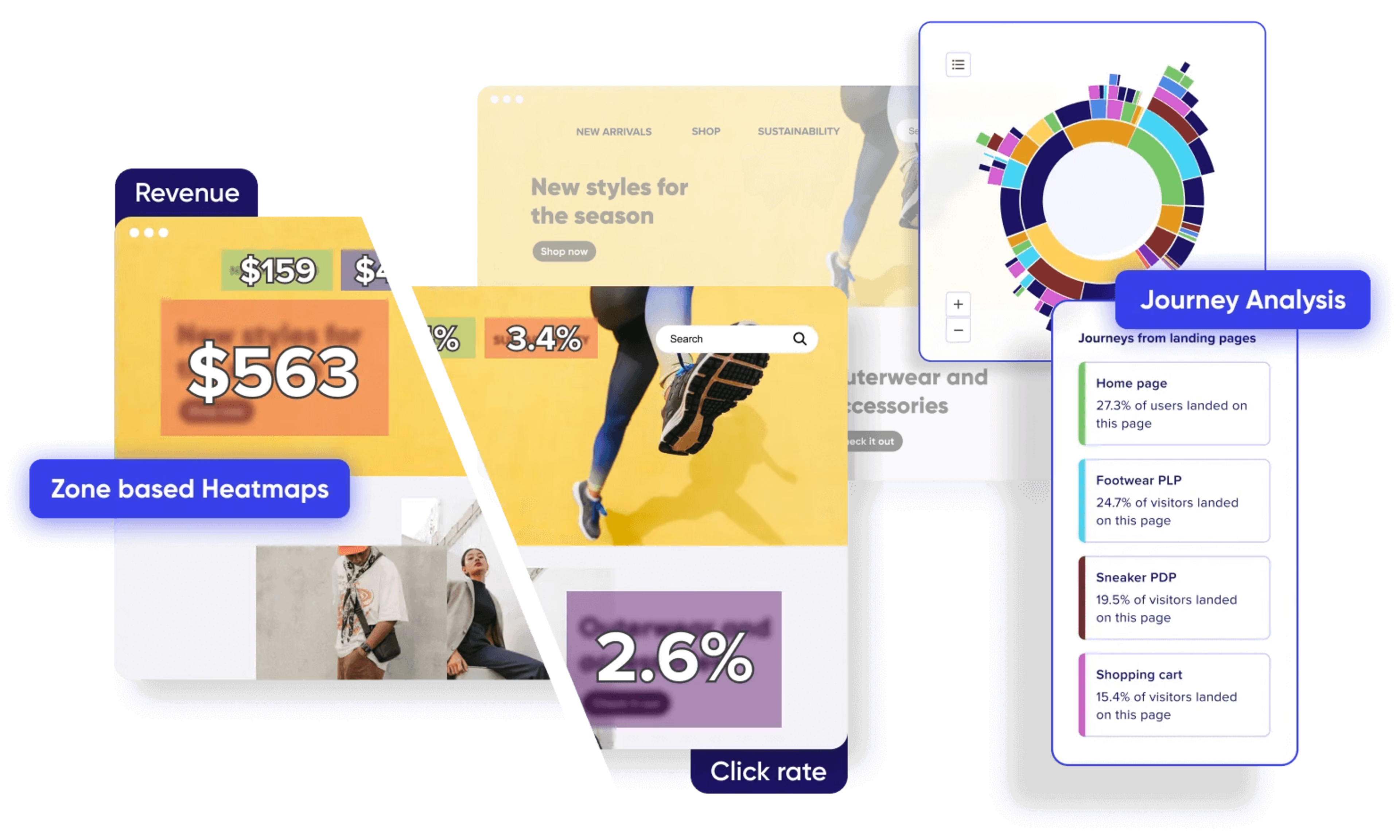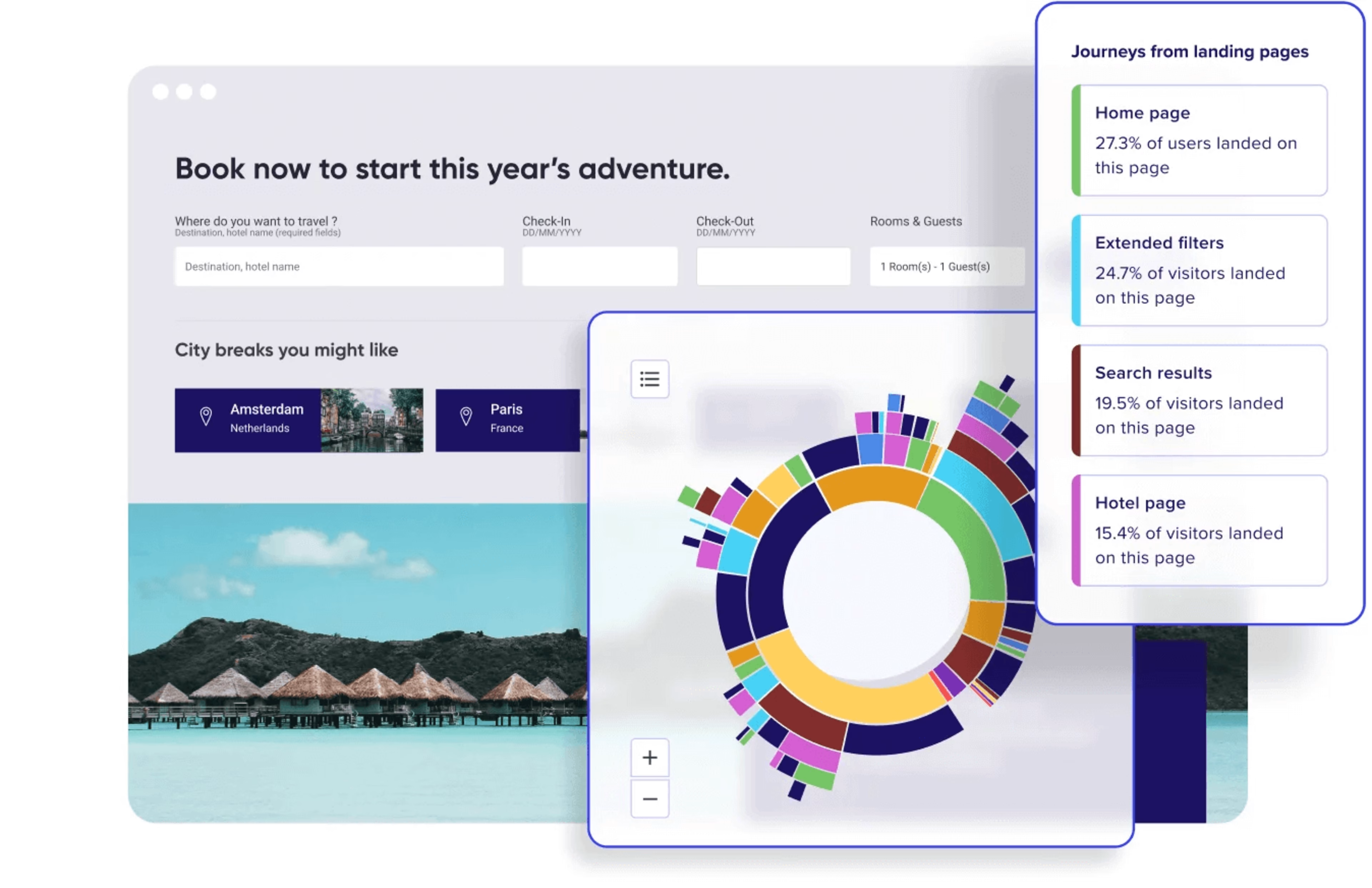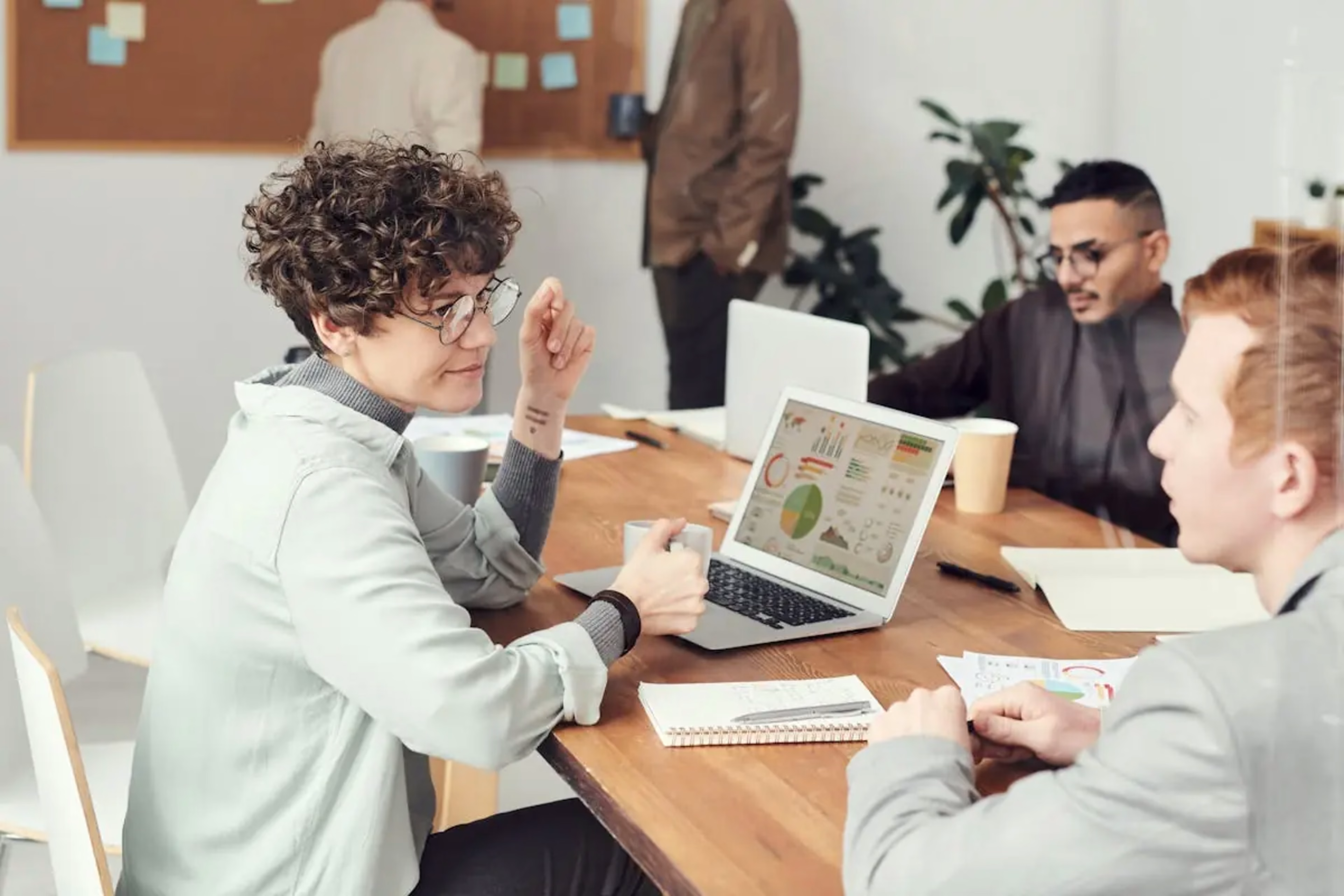In part one of the Make the conversion webinar series, we explored the importance of the awareness stage. But what happens after you’ve captured website visitors’ attention?
Enter the consideration stage. This is where things get interesting. Here, the focus shifts to converting website visitors into users who take a desired action. Understanding what motivates customers during consideration is key to convincing them a product or service is the solution they’re looking for. Optimizing this stage significantly impacts conversion rates and customer satisfaction.
Our second webinar featured expert perspectives on consideration. Let’s explore what it means, why it matters, and how to master it.
Understanding the consideration stage
Anthony Mills, Director of Experience Optimization at Merkle Cardinal Path, defines the consideration stage as a critical yet tricky part of the customer journey.
Sandwiched between the awareness stage and the decision stage, the consideration phase involves potential customers evaluating which product or service best meets their needs. During this stage, customers research and make informed decisions, providing marketers with valuable traceable cues that signal their progress in the journey.
Mills highlights that prospective buyers often take these specific actions to indicate their intent such as
Quote requests
Obtaining final pricing
Viewing a special offer
Visiting a product detail page (PDP)
Engagement with a retargeting campaign
Viewing a coupon or offer
Checking for local store directions
These actions help businesses segment their audience more accurately and tailor their marketing strategies. By understanding and optimizing this part of the funnel, companies can effectively guide customers toward the decision stage, and drive conversions.
This could involve leveraging social media, targeted content, and personalized messaging that focus on specific pain points and steer potential customers closer to purchase.
Getting the consideration stage right matters

Mary Kate Cash, Head of Growth Marketing at ABTasty, a web experimentation platform, highlights the importance of discoverability and research during the consideration stage of the buyer’s journey.
At this point, potential customers have identified a need but may not know the specific product that will fulfill it. Businesses must ensure their products are easily discoverable, regardless of a customer’s search clarity.
“I might be looking at three different dresses from one brand, or three different dresses from three different brands. And if you’re not going to give me the information that I need to feel comfortable making the purchase, I’ll go somewhere else. A lot of consumers feel this way. Similarly, there are too many options available, so if you don’t give them what they want, the right information, in the right way, at the right time, they’ll find somebody else who will.” — Mary Kate Cash, Head of Growth Marketing at ABTasty
According to ABTasty’s Consumer Trends 2024 report, 90% of shoppers consider multiple options at the same time. This means customers will compare different products and brands before deciding to checkout. If they don’t find the information they need on your site, they’ll quickly move to a competitor. Ensuring that PDPs provide the right information in the right format can make all the difference.
A seamless and intelligent site search function can improve discoverability, helping customers find what they need even with typos or partial queries. Additionally, if search results come up empty, suggesting similar products can keep customers engaged.
The information on PDPs is equally crucial. The content should not only be comprehensive but also strategically placed to answer any potential questions and guide customers toward their purchase decision.
Example: Embark Veterinary
A great example of optimizing the consideration stage comes from Embark Veterinary, a company specializing in dog DNA testing and health kits. They aimed to understand what type of copy would resonate most with their target audience on their PDPs. They tested various types of copy, ranging from emotional appeals to clinical information, and from severe health examples to less severe ones.
Through testing, they discovered that a more clinical tone with less severe examples resonated best with their audience, providing the necessary information to customers and helping them make informed decisions.
By fine-tuning their content strategy, Embark Veterinary was able to better meet the needs of their customers, ultimately guiding them more effectively through the customer journey stages.

Image source: https://embarkvet.com/
How the consideration stage varies across industries and segments
Mary Kate Cash further explains that the consideration stage varies significantly across different industries, age groups, and customer segments.
Drawing insights from AB Tasty’s report involving around 4,000 consumers, she explains that shopper behavior is diverse and influenced by multiple factors. For example:
28% of shoppers identify as confident
22% as review-oriented
21% as comparison-oriented
19% as detail-oriented
10% as speedy shoppers
The preferences also differ by age group. Boomers tend to be more confident shoppers, while Gen Z is more review-oriented. This segmentation highlights the need for personalized approaches in the consideration stage.
To effectively cater to different segments, businesses must create adaptable PDPs that can be tailored to various preferences. Detail-oriented shoppers might appreciate expandable sections with comprehensive product information, while speedy shoppers may prefer a straightforward “buy now” button.
Biggest pain points for customers in the consideration stage
Anthony Mills mentions several pain points that can deter potential customers during the consideration stage and drive them to competitors:
1. Friction
The biggest issue is friction. Any form of friction, whether due to slow page loads, poor page layout, or a confusing user experience (UX), can impact conversions. Tracking these issues with the right metrics is the first step to fixing them.
2. Irrelevant content
Another major pain point is presenting a one-size-fits-all content approach. Bombarding customers with excessive information and making them filter through irrelevant details can create a frustrating experience. Instead, marketing efforts should focus on tailoring content to drive potential customers into relevant sections of the marketing funnel, enhancing their journey based on their interests.
3. Lack of credibility
Lack of trust and transparency can also play a role. Visible indicators like low review counts or poor reviews can quickly decrease customers’ trust in your products or services. Using third-party validations, such as awards or certifications, can help establish credibility and build customer loyalty.
Making your value propositions clear and concise is essential. Too much text can deter customers (especially those with short attention spans). Stick to simple language and clearly articulate your value propositions to encourage further engagement.
Strategies to get the consideration stage right
Navigating the consideration stage of the customer journey can be challenging but crucial for converting potential customers into loyal clients. Here are the steps you can take to get it right:
Step 1: conduct a comprehensive content audit
Start by performing a detailed content audit. You can do this by
Classifying content: identify and categorize existing content based on its objective. Determine which content is aimed at the consideration stage and which is geared towards the decision stage.
Assessing volume and breadth: evaluate the amount and variety of content available. Look for any gaps that need to be filled to ensure you cover all your customer’s needs.
Content segmentation: properly segment content to easily identify and track user progress through different stages of the customer journey.
Step 2: define key performance indicators (KPIs)
Establish clear KPIs to measure the success of your marketing efforts. You can do this with
Throughput percentages: measure the percentage of users transitioning from consideration content to decision-oriented content. This helps in understanding the effectiveness of your marketing funnel.
Quantifying bounce rates: analyze where users are dropping off between stages to identify and address potential pain points. Use a Digital Experience Analytics platform like Contentsquare to understand your customer journey and monitor key metrics.

Contentsquare’s Digital Experience Analytics Platform allows you to see what drives engagement and abandonment on your sites and mobile apps
Step 3: set a solid baseline
Create a baseline across your KPIs to ensure a unified approach. You can do this by creating a playbook that ensures all team members are working from the same data and metrics. This consistency helps in aligning strategies and objectives across the organization.
Step 4: engage in brainstorming and ideation
Foster collaboration and creativity within your team to generate effective solutions. You can do this by organizing ideation workshops that bring team members together. Use the data and insights gathered to brainstorm strategies for improving customer experience and moving users through the consideration stage effectively.
Optimizing the consideration stage with AB Tasty and Contentsquare
Using both AB Tasty’s experimentation platform and Contentsquare’s Experience Intelligence platform, you can streamline this process through a powerful combination of digital experience analytics and A/B testing.
Here’s a look at how our integration works and how it can help your brand ace the consideration stage.
1. A 360-degree UX view
Our all-in-one Experience Intelligence platform provides insights into user behavior—identifying points of frustration within the user journey. With AB Tasty, these insights can be leveraged to identify and optimize specific pain points within the user journey.
The combination of both solutions, allows you to have the full picture of how visitors are interacting with your website, while empowering you to take action elements that require improvement.

The Contentsquare platform allows you to elevate your insights and deepen customer understanding with capabilities like Customer Journey Analysis.
2. Robust experimentation
When you formulate hypotheses informed by behavioral data in Contentsquare, ABTasty allows you to build experiments to validate your theories. Conduct and track A/B tests and personalized campaigns to determine whether the user journey improvements you’ve implemented are truly effective.
3. Seamless workflows
With the Contentsquare and AB Tasty integration, there’s no need to toggle between two separate platforms. Workflows are streamlined, eliminating siloed workspaces and complicated software setup processes.
4. Guaranteed business impact
Maximize impact and close revenue-stagnating gaps. Save money and time, while discovering new opportunities for revenue generation. Use the customer data from Contentsquare to drive and implement change with AB Tasty, and ultimately boost conversions.
Tip: For a more in-depth overview of how this integration optimizes the consideration stage, watch a detailed demo given by Evan Wells, the Senior Solution Consultant at Contentsquare.
Master the middle of the funnel
Effectively navigating the consideration stage of the customer journey is crucial for guiding prospective customers through their decision-making process. It’s your opportunity to shine by addressing customer pain points, improving discoverability, and delivering clear value propositions.
By combining AB Tasty and Contentsquare, you can build an effective optimization program that meets the needs of both new and loyal customers, helping you drive higher conversions and customer loyalty during the consideration stage.
For more in-depth insights, watch Make the conversion: identify and eliminate pain points throughout the customer journey webinar series. This five-part series, brought to you by Contentsquare in partnership with Amazon Web Services (AWS), explores the different stages of the customer journey and offers practical advice on identifying and eliminating pain points.
![[Visual] [Author] Tracey Che King](http://images.ctfassets.net/gwbpo1m641r7/5ir9pkdAd1QOMWNqFg827Q/fef347bf0dc3aadb66701c6ebda534b9/Tracey_Che_King_.jpeg?w=640&q=100&fit=fill&fm=avif)
Tracey's work has garnered millions of social media impressions and boosted web traffic for her clients. When she’s not working, Tracey enjoys exploring new travel destinations, honing her culinary skills, or getting lost in a good book.
